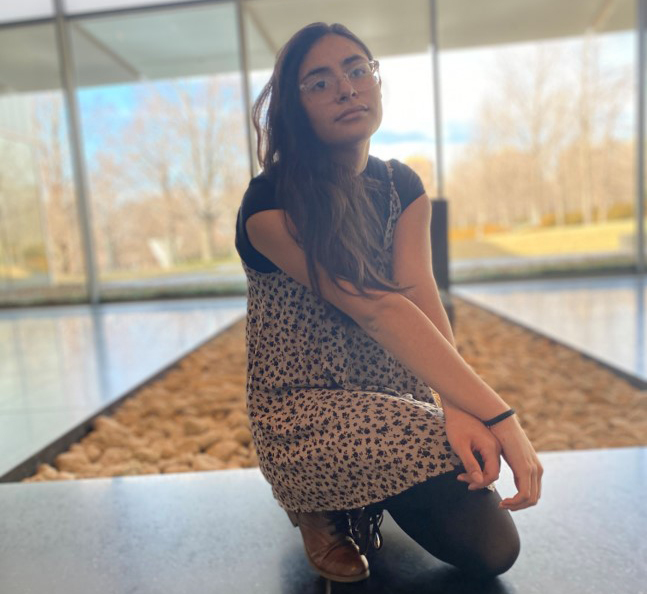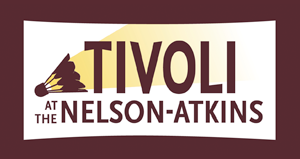Muhammad Ali trusted Gordon Parks to tell his story to the readers of Life magazine through photojournalism—with photographs and words.
Is there someone you want to know better? Someone with interesting tales to share? This could be a grandparent, friend, or maybe a cousin you don’t see often. Follow the guidelines, suggestions, and tips below and work together to tell the story.
What You’ll Need:
- Your subject
- Camera, smartphone, or tablet
- Something to write or type on
- Something to write with
Step 1: Interview your Subject
What is their story? Interviewing can be as simple as just having a conversation. To find out more, here are some questions you could ask:

- What is your favorite place in the world? Why?
- If you could, what would you most want to change in the world?
- Tell me about what you like to do. What do you do that is fun?
- What is your dream job?
- Do you have a personal motto? Which words or phrases do you use the most?
- What are the characteristics you most admire in yourself? In others?
- Name three of your favorite accomplishments.
- How would your friends describe you?
Step 2 – Take a photographic portrait
Using a digital camera, or the camera on your phone or an iPad, you’ll need to take some photographs of your subject. There are some things photographers might consider as they’re photographing their subject:
- What kind of mood do you want to convey? Fun and playful? Serious? Thought provoking? The conversation you have with your subject will give you direction.
How can you use the attributes of photography to direct the viewer’s eye and reveal things about the person in the photo? Photographic attributes can include the following:
- Light: Where should the light be concentrated? Should it be harsh or soft? Would you like any shadows to be subtle or create strong contrasts?
- Focus: What parts of the image will be clearly defined, and which will be blurry or out of focus?
- Vantage Point/Point of View: What position will you be in to capture the image? Above or below, far away or close to the person in your photograph?
- Framing: How would you like to frame your subject? In the center of the image? To the side? Top? Bottom? Should they take up the entire frame, or a small part of it? What do you want to include from the surrounding setting and what will you choose to leave out of the image?
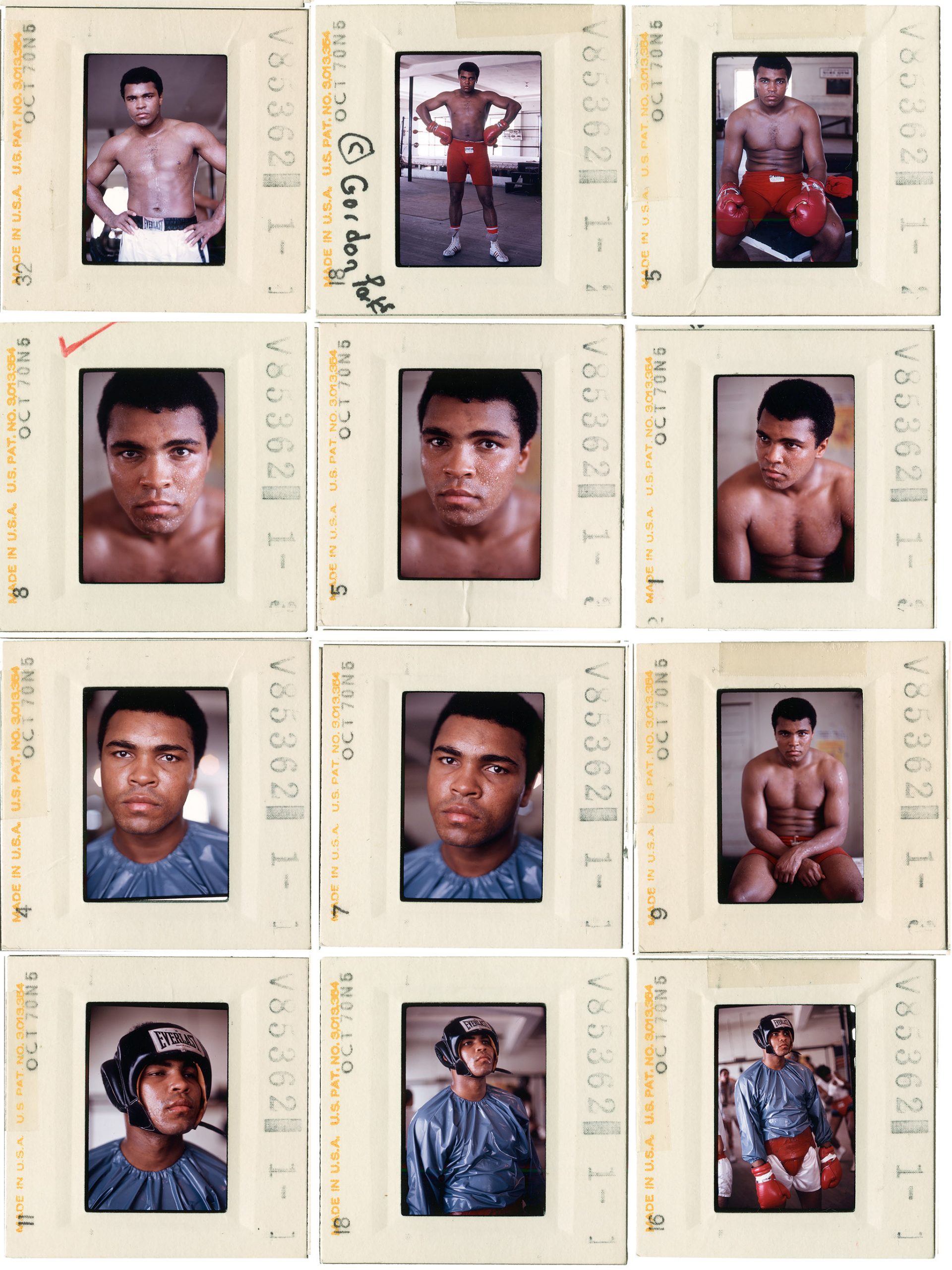
Gordon Parks, Untitled, Miami Beach, Florida (5th Street Gym), 1970, color slides, The Gordon Parks Foundation.
In the photograph below, Gordon Parks framed Muhammad Ali’s famous feet (“float like a butterfly, sting like a bee”) in the foreground. The focus is sharp on Ali’s face in the mirror, highlighting his intelligence and, perhaps, his self-admiration.
In the photograph below, Parks made sure he caught the light when it was illuminating Ali’s face, and he took the photo from a vantage point from below. Capturing Ali and his opponent towering above made their intimidating prowess and the intensity of the boxing match all the more visceral.
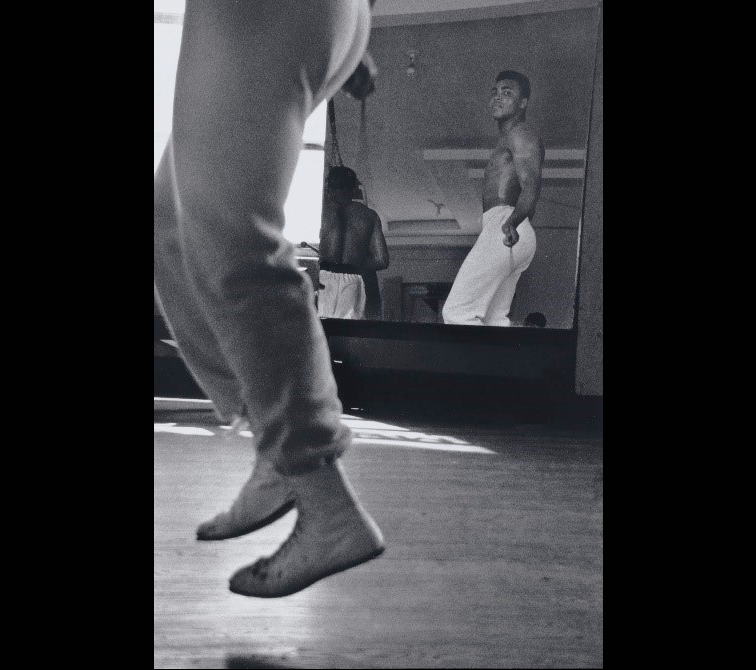
Gordon Parks, American (1912–2006). Untitled, London, England, 1966. Gelatin silver print, 20 x 16 inches. The Nelson-Atkins Museum of Art, anonymous gift, 2019.14.4. Copyright The Gordon Parks Foundation.
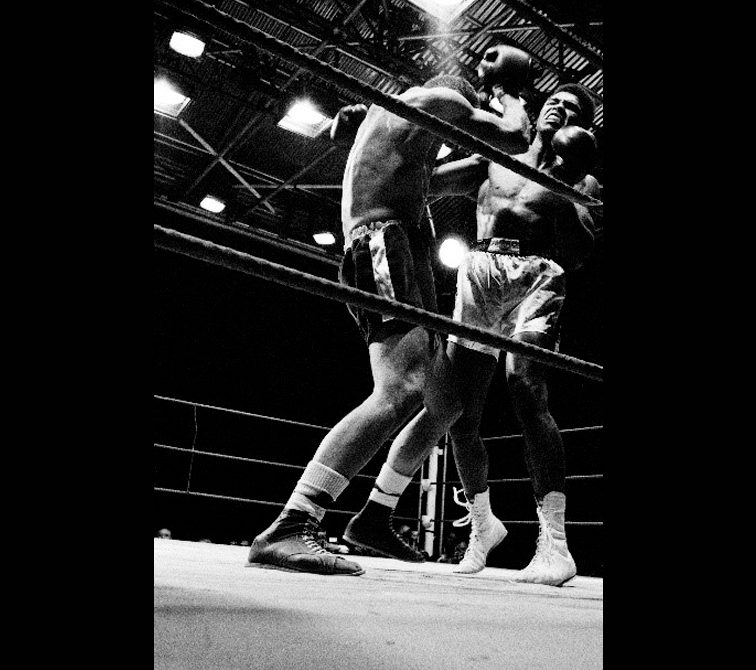
Gordon Parks, American (1912–2006). Untitled (Arsenal Stadium, Highbury), London, England, 1966. Gelatin silver print, 16 x 20 inches. The Nelson-Atkins Museum of Art, anonymous gift, 2019.14.5. Copyright The Gordon Parks Foundation.
Don’t limit yourself to just one or two shots. Take many photographs so you can experiment with each of the photographic attributes and see what works best for you and your subject.
Step 3 – Choose your final photograph
Gordon Parks took hundreds of images for his Life Magazine story about Muhammad Ali in 1966. He and his editors narrowed them down to just three for publication in the magazine. Use your editor’s eye to review your photos and select the one that tells the story of your subject the best.
Step 4 – Write an introduction
You’ve chosen your photograph; now, imagine the photograph is going to be published with text accompanying it. Use what you’ve learned about your subject from the interview to write a short introduction.
What can you add to your photographic portrayal? Are there additional insights into the person’s story that you can share through writing?
